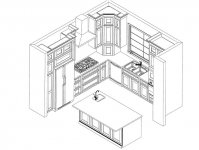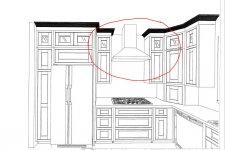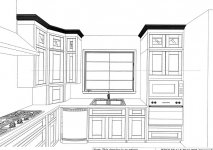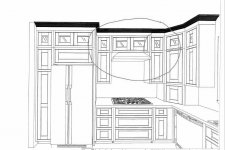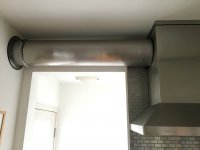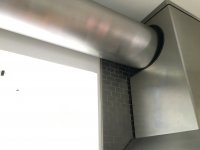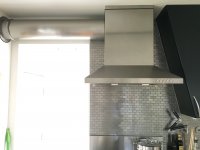JZ Bowmannz
Member
- Joined
- Nov 27, 2013
- Messages
- 145
Hello Everyone,
I am in the process of remodeling the kitchen, and running into a difficulty installing the vent of the hood. Would like to ask for suggestion / help with your expertise.
Here is the kitchen layout. The vent line direction is going towards right where the wall/window is.
[attachimg=1]
The wall that the hood will be installed on is a regular 2x4 stud wall, which does not provide enough space for the vent.
[attachimg=2]
The ceiling joists (floor joist for second floor living space) are running in "in-and-out" direction, which will be painful to feed the vent line through each one (possibly 5 joists total), plus it will weaken the integrity of the structure I believe.
[attachimg=3]
Is there any good idea / decorative design to build up a small section of soffit both left and right of the hood as solution? Or do you guys have better solution? My wife really likes to have a stainless steel hood, so a build up hood might not be a good alternative.
Any suggestion will be appreciated. Thanks. JZ
I am in the process of remodeling the kitchen, and running into a difficulty installing the vent of the hood. Would like to ask for suggestion / help with your expertise.
Here is the kitchen layout. The vent line direction is going towards right where the wall/window is.
[attachimg=1]
The wall that the hood will be installed on is a regular 2x4 stud wall, which does not provide enough space for the vent.
[attachimg=2]
The ceiling joists (floor joist for second floor living space) are running in "in-and-out" direction, which will be painful to feed the vent line through each one (possibly 5 joists total), plus it will weaken the integrity of the structure I believe.
[attachimg=3]
Is there any good idea / decorative design to build up a small section of soffit both left and right of the hood as solution? Or do you guys have better solution? My wife really likes to have a stainless steel hood, so a build up hood might not be a good alternative.
Any suggestion will be appreciated. Thanks. JZ

